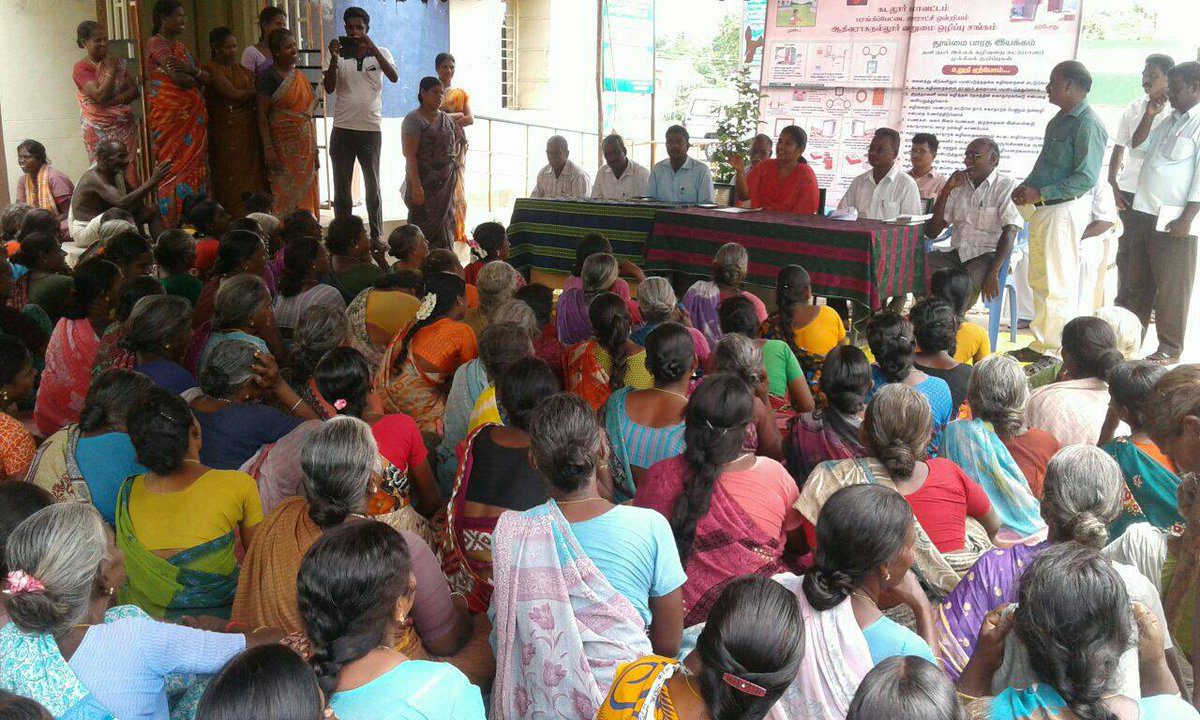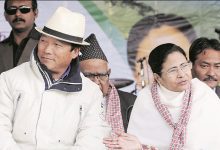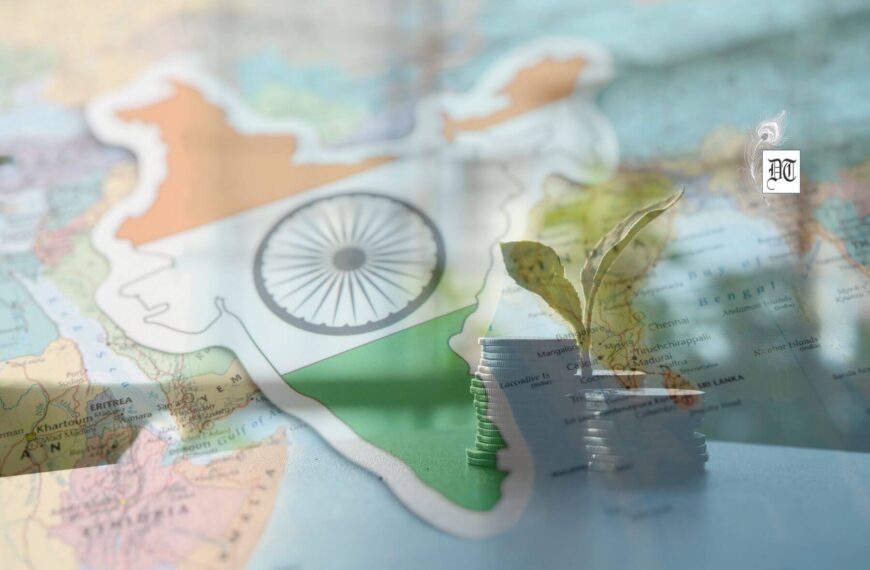Out of 716 districts, DAY-NRLM is being implemented only in 586, and the total number of blocks covered is only 4,459 out of about 6,000. Nevertheless, a recent propaganda material released by the government boasts about the physical achievements of this flagship programme aiming at image building. Here’s a report, for Different Truths.
National Rural Livelihood Mission (NRLM), launched in June 2011, was one of the flagship programmes to eradicate rural poverty in India. By the 7th year of its implementation, it was to cover all the districts and blocks of the country. Only after two months, the time will be over, but the government has failed to achieve the target. It succeeded only in renaming it Deendayal Antyoday Yojna (DAY) in November 2015. It shows the commitment of the ruling establishment to the sectarian view of nationalism and lack of commitment towards poverty alleviation. Out of 716 districts, DAY-NRLM is being implemented only in 586, and the total number of blocks covered is only 4,459 out of about 6,000. Nevertheless, a recent propaganda material released by the government boasts about the physical achievements of this flagship programme aiming at image building.
But this is unacceptable because the high level of poverty in rural India is unacceptable. The year when the programme was launched, India’s population was 121 crore, out of which 83.3 crores were living in the six lakh villages. Tendulkar line is the official line of poverty, which estimated poverty line at the consumption level of 27.2 rupees per day per person for rural areas, and the incidence of rural poverty at 25.7 percent. It was, in fact, the line of destitution. The real incidence of poverty was very high according to other national or international reports. Even the Working Group on NRLM had put rural poverty at 42 percent. Moreover, the rural poor constitute 80 percent of the poor of the country. Since then, the population has grown to about 133 crores, and 69 percent of them (about 91.7 crores) are living in villages. The enormity of the task of poverty alleviation required much more effort than the present ruling establishment has managed to do for the last four years.
NRLM was set out with an agenda to cover seven crore rural poor household (about 35 crore population) across 600 district, 6,000 blocks, 2.5 lakh gram panchayats and six lakh villages through self-managed Self Help Groups (SHGs) and federated institutions and support them for livelihoods collectives in a period of 8-10 years when the last village would be covered. The system provided an institutional framework to the poor for the first time. These institutions are of the poor, managed by the poor, and for the poor. The programme was to be implemented in a phased manner. In the first year of its implementation 150 districts and 600 blocks, in the third year additional 150 districts and 1,500 blocks, in the fifth year the remaining 300 districts and additional 2,100 blocks, and in the seventh year 1,800 blocks were to be covered. This is almost the end of the 7th year.
However, the government has failed in the timely and qualitative implementation of this programme. Rural poverty in 1993-94 was 50.1 percent. During 1993-94 to 2004-05, it declined by 8.3 percentage points with an annual average decline of only 0.75 percentage point per annum. In between 2004-05 and 2009-10 it further declined by 8.2 percent at the average decline rate of 2.32 percentage points per annum. The data about the decline in poverty under the present regime is not available, but the incidence of poverty must be at a very high level due to the increase in population and cost of living, apart from the failure of the government.
It is stated in the release of the government that its DAY-NRLM seeks to alleviate rural poverty by building sustainable community institutions of the poor, which has seen a rapid expansion in the last three years. During FY 2017-18, an additional 820 blocks were covered under the “Intensive” strategy and more than 82 lakh households mobilized into 6.96 lakh Self Help Groups (SHGs) across the country. Cumulatively, more than 4.75 crore women have been mobilized into more than 40 lakh SHGs. Further, the SHGs have been federated into 2.2 lakh village level federations and more than 19,000 cluster level federations. Cumulatively, these community institutions have been provided more than Rs. 4,444 crore as capitalization support. As part of its financial inclusion strategy, the Mission closely works with the Department of Financial Services (DFS), Reserve Bank of India (RBI) and the Indian Bank Associations (IBA) to provide bank credit to SHGs. As a result of the sustained efforts, the loan outstanding to SHGs has increased from Rs. 22,238 crore in FY 2013-14 to Rs. 64, 589 crores as of Feb’18. Cumulatively, Rs. 1.55 lakh crore worth of bank credit has been leveraged by the SHGs during the last five years.
Such a language does not reflect the reality but misleads the people to believe that the government is performing very well and is really working for the poor. An interest of the government is somewhere else. Our financial institutions are also more interested in such activities, which create more NPA at the cost of people’s money. The recent discloser about bank frauds by ‘big’ people in connivance with bank and government officials and the ever-increasing NPA by industrialist defaulters are its proof. However, the poor and their institutions are not smoothly getting loans, despite the fact that their NPA has declined to 2.4 percent in 2017-18. Keeping in view the timely repayment by the SHGs, they must have been financed more smoothly by giving them timely and sufficient loans to manage their own efforts for overcoming poverty. More so because neither the rich nor the government is able to eradicate their poverty. The prevailing mindset of the bankers must change.
The remote rural areas have more difficulties in getting access to financial services because banks are yet to percolate sufficiently in the rural areas. Despite the fact that all the government transactions, including subsidies for food security programmes like Public Distribution System, MGNREGA, etc are being made through bank accounts, there is a huge gap between the requirement and availability of banks. To overcome this, the mission envisaged last mile delivery of credit services through the agency of SHGs. However, only about 1,518 SHG members have been deployed as Banking Correspondents Agents (BCAs) to provide last mile financial services including deposit, credit, remittance, disbursement of old age pensions and scholarships, payment of MGNREGA wages and enrollment under insurance and pension schemes. As of Feb this year, 1.78 lakh SHG members had availed banking services through the BCAs and over 8.9 lakh transactions amounting to Rs. 187.92 crore had been completed. It is too small an achievement compared to the requirement.
Gyan Pathak
©IPA Service
Photo from the Internet





 By
By

 By
By
 By
By